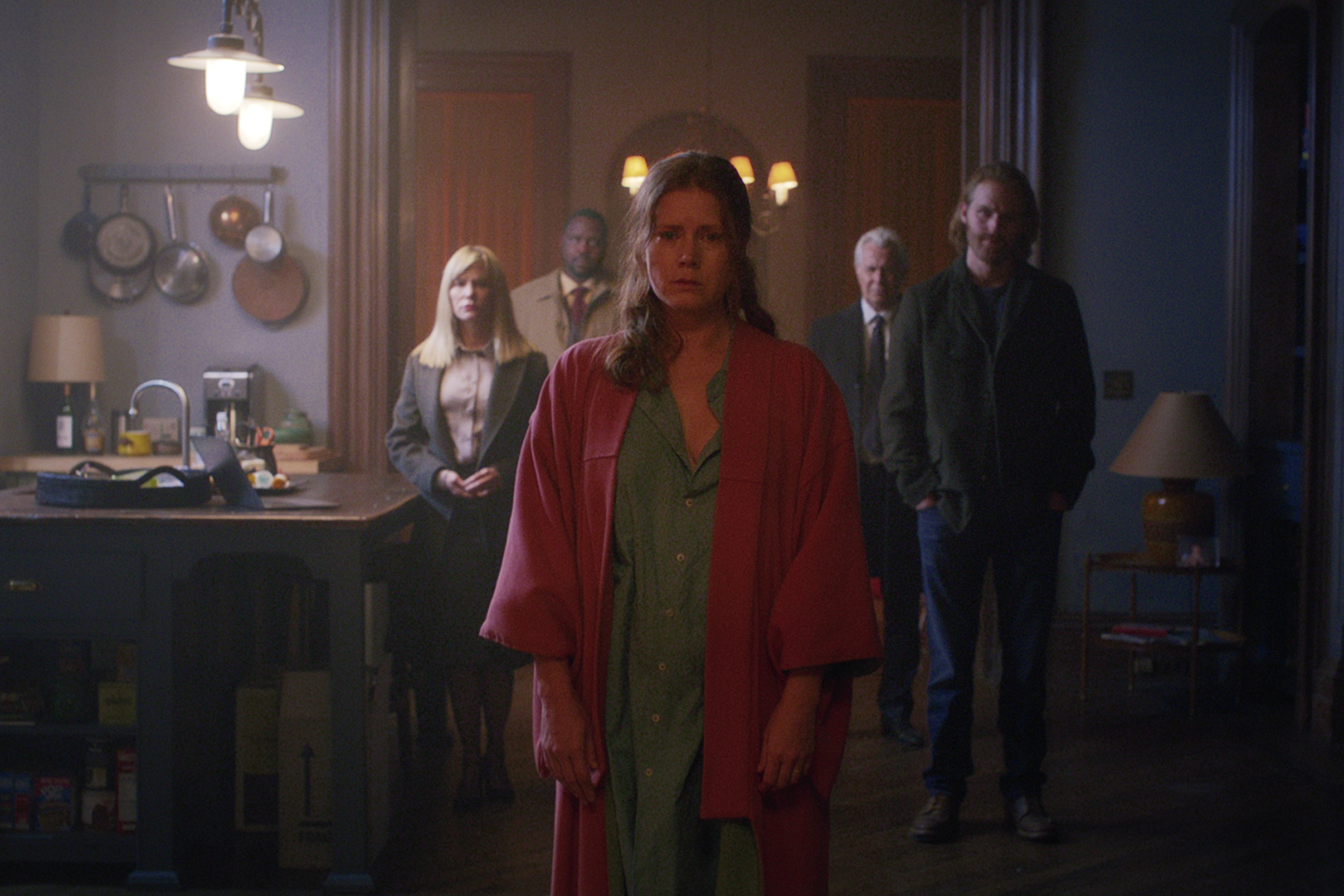The Woman in the Window's agoraphobic Anna Fox sheds light on the complex anxiety disorder
The Woman in the Window raises awareness of agoraphobia, a debilitating anxiety disorder that affects between 1% and 7% of the population


The Woman in the Window has sparked an important dialogue on mental illness through its powerful depiction of agoraphobia, one of the lesser-known clinical anxiety disorders.
The Netflix thriller invites viewers into the world of Anna Fox, a child psychologist whose diagnosis of the complex condition prevents her from leaving her home.
Played by Amy Adams, Anna leads a lonely existence within the four walls of her New York apartment, where she spends her days drinking alcohol, taking medication, and observing others through her window.
Her mental health drastically deteriorates after she witnesses her neighbor, Jane (Julianne Moore), being stabbed to death by her husband. She reports the murder to the police, only to be told that no such crime has occurred. The incident plunges her into a state of total disarray, prompting her to question her grasp on reality as she desperately seeks to find out the truth.
Read more from woman&home:
• The best sleep guided meditations for drifting off at night
• The best workouts for getting fit and feeling good
• The best yoga mats for stretching, meditation, beginners, and advanced workouts
What is agoraphobia?
The Woman in the Window's Anna Fox suffers from agoraphobia, an anxiety disorder that causes the individual to avoid certain environments and/or situations. This avoidance is driven by an intense fear that the person will be unable to escape the setting, of which they typically have a negative perception.
The condition can severely impact a person's day-to-day functioning, making regular tasks incredibly stressful or even impossible to complete. Agoraphobic individuals commonly avoid busy public places, like shopping malls and city centers, as well as enclosed spaces like elevators and movie theatres.
Sign up for the woman&home newsletter
Sign up to our free daily email for the latest royal and entertainment news, interesting opinion, expert advice on styling and beauty trends, and no-nonsense guides to the health and wellness questions you want answered.

The Woman in the Window's agoraphobic Anna Fox sheds light on the complex anxiety disorder
What causes agoraphobia?
While the exact cause of agoraphobia remains unknown, there are a number of risk factors for developing the condition.
Agoraphobia often emerges after a person has a panic attack in a particular environment. The person is left with a deep-rooted fear of the site of the episode, causing them to avoid it altogether.
Agoraphobia can also develop following a traumatic event, like a violent crime, or as the result of an irrational fear associated with going outdoors.
How is agoraphobia treated?
Fortunately, there are many treatment options available for agoraphobia.
Cognitive-behavioral therapy (CBT) is often used to help individuals with the condition, by altering negative thought patterns and consequently shifting one's behavior.
Exposure therapy is another commonly used treatment. People with agoraphobia learn to manage their anxiety by imagining or inserting themselves in the feared situation, where they can practice self-soothing techniques and gradually relieve their anxiety.
Lifestyle interventions, such as exercise and meditation, have also been shown to alleviate symptoms of agoraphobia.

Hailing from the lovely city of Dublin, Emma mainly covers the Royal Family and the entertainment world, as well as the occasional health and wellness feature. Always up for a good conversation, she has a passion for interviewing everyone from A-list celebrities to the local GP - or just about anyone who will chat to her, really.
Emma holds an MA in International Journalism from City, University of London, and a BA in English Literature from Trinity College Dublin.
-
 Helen Skelton's layered look is giving me plenty of country chic style inspiration this Earth Day
Helen Skelton's layered look is giving me plenty of country chic style inspiration this Earth DayShe paired a mocha-coloured jumper with a blue shirt and a pair of wellies by Kate Middleton's favourite brand
By Caroline Parr
-
 What happens to Emily in The Handmaid's Tale and why did Alexis Bledel leave?
What happens to Emily in The Handmaid's Tale and why did Alexis Bledel leave?Emily was a fierce character and much-loved by fans who want to know more about her eventual fate in The Handmaid's Tale.
By Lucy Wigley